The Muppets’ Carol of the Bells
The only Christmas music I want to hear this year is The Muppets doing Carol of the Bells. Beaker, Animal, and the Swedish Chef makes a great trio, don’t you think?



This site is made possible by member support. 💞
Big thanks to Arcustech for hosting the site and offering amazing tech support.
When you buy through links on kottke.org, I may earn an affiliate commission. Thanks for supporting the site!
kottke.org. home of fine hypertext products since 1998.
The only Christmas music I want to hear this year is The Muppets doing Carol of the Bells. Beaker, Animal, and the Swedish Chef makes a great trio, don’t you think?
Ok, hold up. This is the only stuffing recipe you need for Thanksgiving:
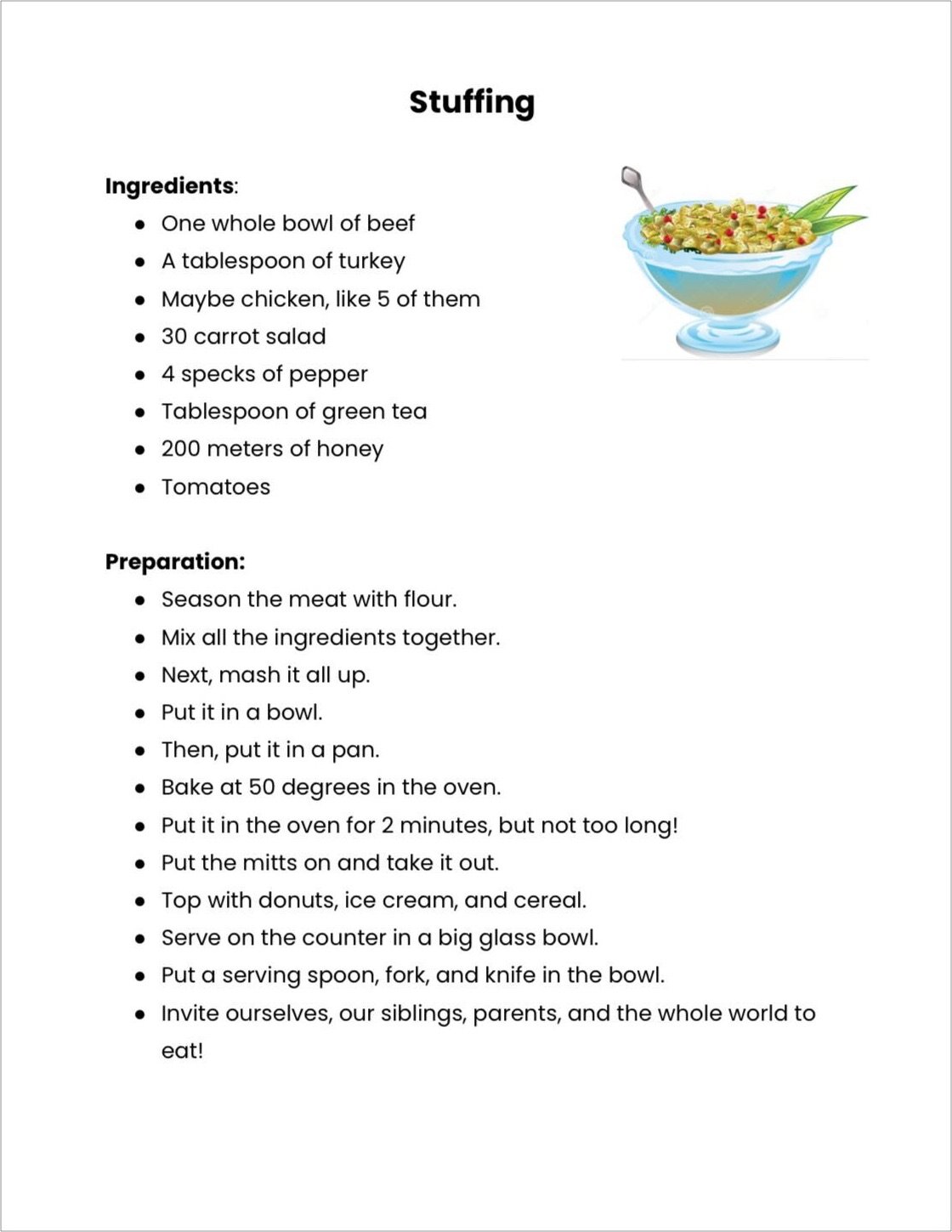
Just a tablespoon of turkey per 200 meters of honey? Lolz. This is from a Thanksgiving cookbook made by a kindergarten class — the turkey recipe involves cinnamon and teriyaki sauce.
Halloween is not really my thing, but I always like looking through some of the best mundane costumes from Japan via Spoon & Tamago and Nick Kapur. A few of my favorites:

“Man who keeps getting mistaken for a store employee”
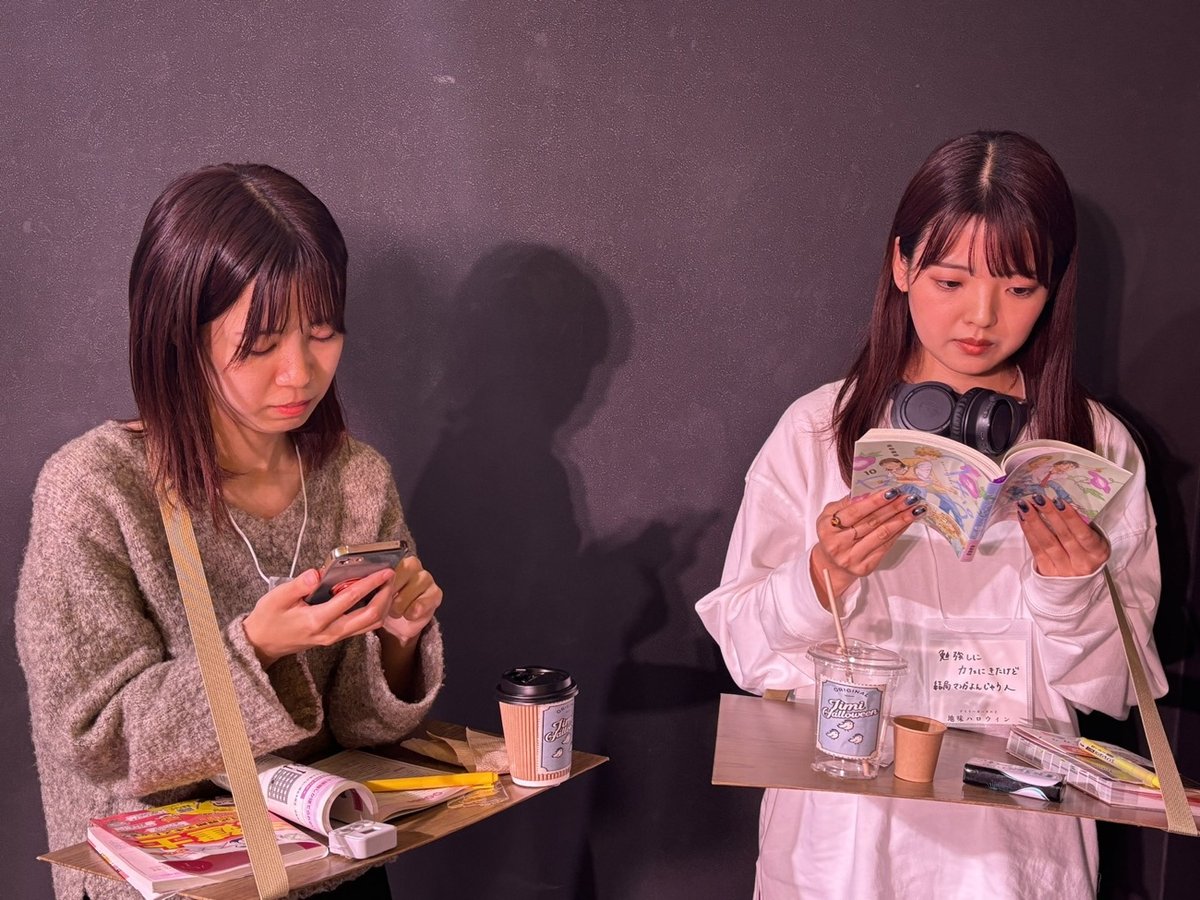
“Students who went to the cafe to study but ended up spending the whole time reading manga and looking at their phones”

“Person who was stingy and only paid for the smallest plastic bag”
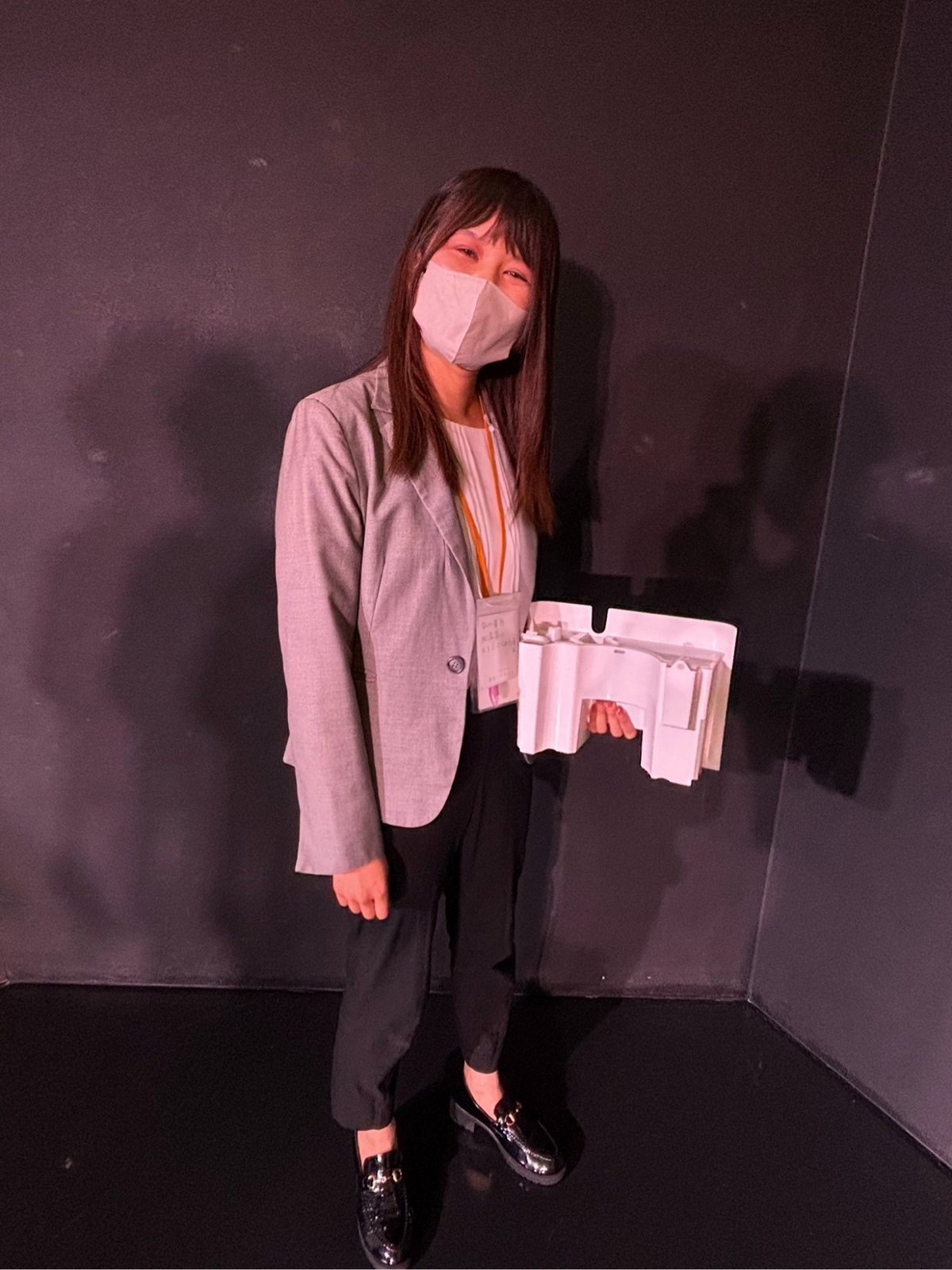
“That one coworker who kindly fills the office humidifier with water every morning”

“Referee at a tug-of-war competition”
Since he was a toddler, artist C.W. Moss has made the artwork for his family’s Christmas card. Here are some early installments from when he was three & seven:
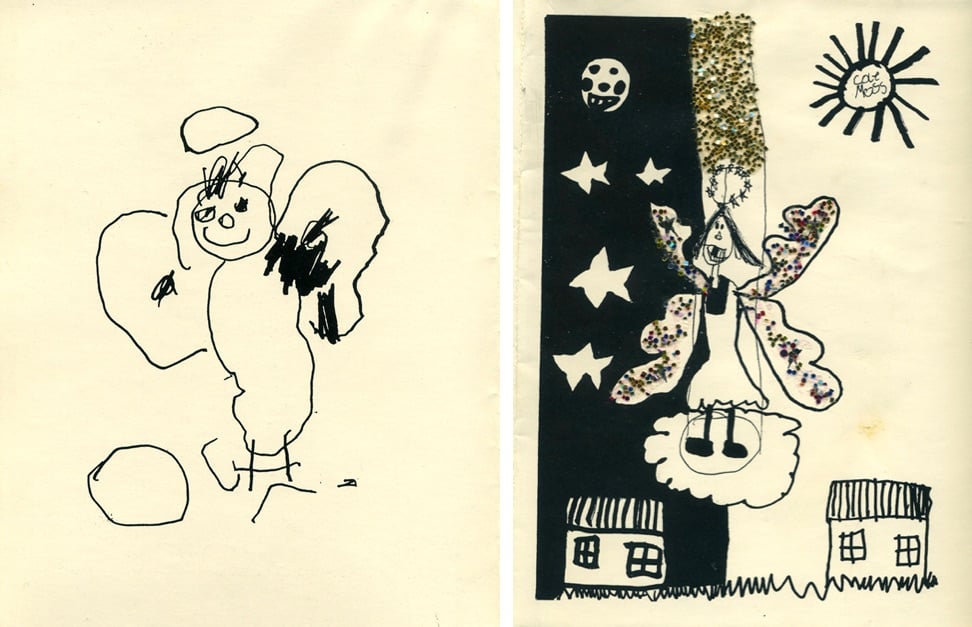
Some from when Moss was 17 and 29:

And the most recent one from age 36 (you can watch how he draws it):
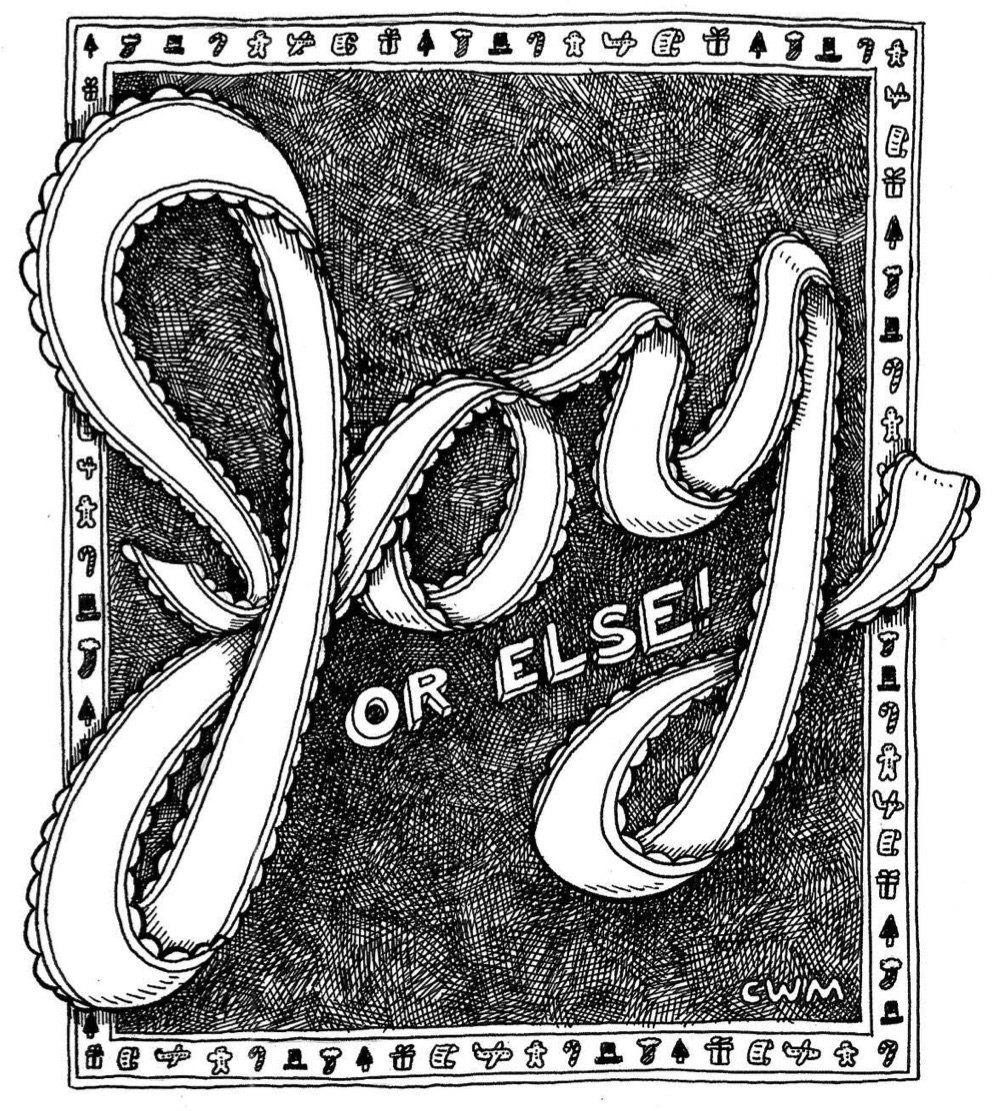
It’s fascinating to see his artistic sense grow and shift over the years, not only increasing in artistic skill as he gets older but also moving from simple depictions of holiday scenes to more conceptual creations.
The entire episode of Pee-wee’s Playhouse Christmas Special (1988) is on YouTube, fully remastered in 1080p HD. Special guests include Annette Funicello, Zsa Zsa Gabor, Whoopi Goldberg, Magic Johnson, Grace Jones, Little Richard, and Joan Rivers. From a Vulture piece on the special:
Christmas at Pee-wee’s Playhouse, the 1988 primetime CBS special from comedian and actor Paul Reubens, is one of the strangest, most glorious, most improbable, most confident pieces of entertainment to appear on television. Thirty-five years after it aired, and in a period of reconsideration after Paul Reubens’s death, the Pee-wee Herman Christmas special still looks like one of the major pinnacles of Reubens as an artist, full of silly delight and winking subversion, all framed inside the relative safety of a big sparkly Christmas extravaganza.
And after declaring “This special is one of the gayest things I’ve ever seen”:
What’s so brilliant about it as a piece of queer art is that it is presented so earnestly, and the iconography they’re playing with is Americana. It plays as camp to our modern view of over-the-top earnestness. But it’s a mix of camp aesthetic and an alternative comedy aesthetic of laughing at bad jokes, like the series of fruitcake jokes, which were at the time a cliché, that fruitcake was bad. Why are we going to make this joke about fruitcake over and over again? Because it’s stupid!
(via austin kleon)
Right on time for all upcoming feasts, it’s “Holiday Recipes Dictated by Kindergarteners,” in the newsletter Bright Spots, by Chris Duffy. (His friend, a kindergarten teacher, had her students “collectively dictate to her how they believe their favorite Thanksgiving dishes were made.”) For instance, turkey:

Click through for further instructions on how to prepare stuffing, cranberry sauce, and pumpkin pie. Where was this two weeks ago?
There are only a couple of things I like about Halloween: 1. Heidi Klum’s costumes (last year she dressed up as a worm), and 2. the relatively recent Japanese tradition of mundane Halloween costumes. From Spoon & Tamago and Nick Kapur (here too), here are a few of my favorite mundane costumes:
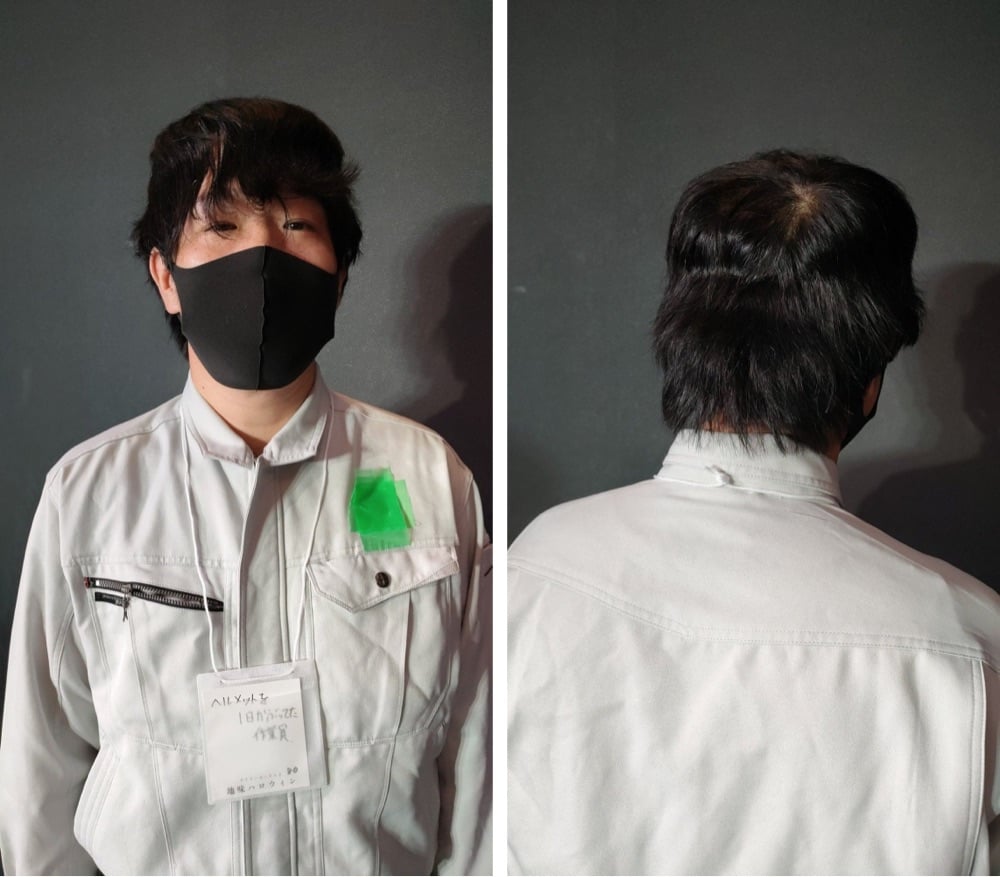
“Factory worker who wore a helmet all day”

“Person who was about to be late for work, but then their train got delayed and now they are taking their time since they got a proof-of-delay ticket from the station”
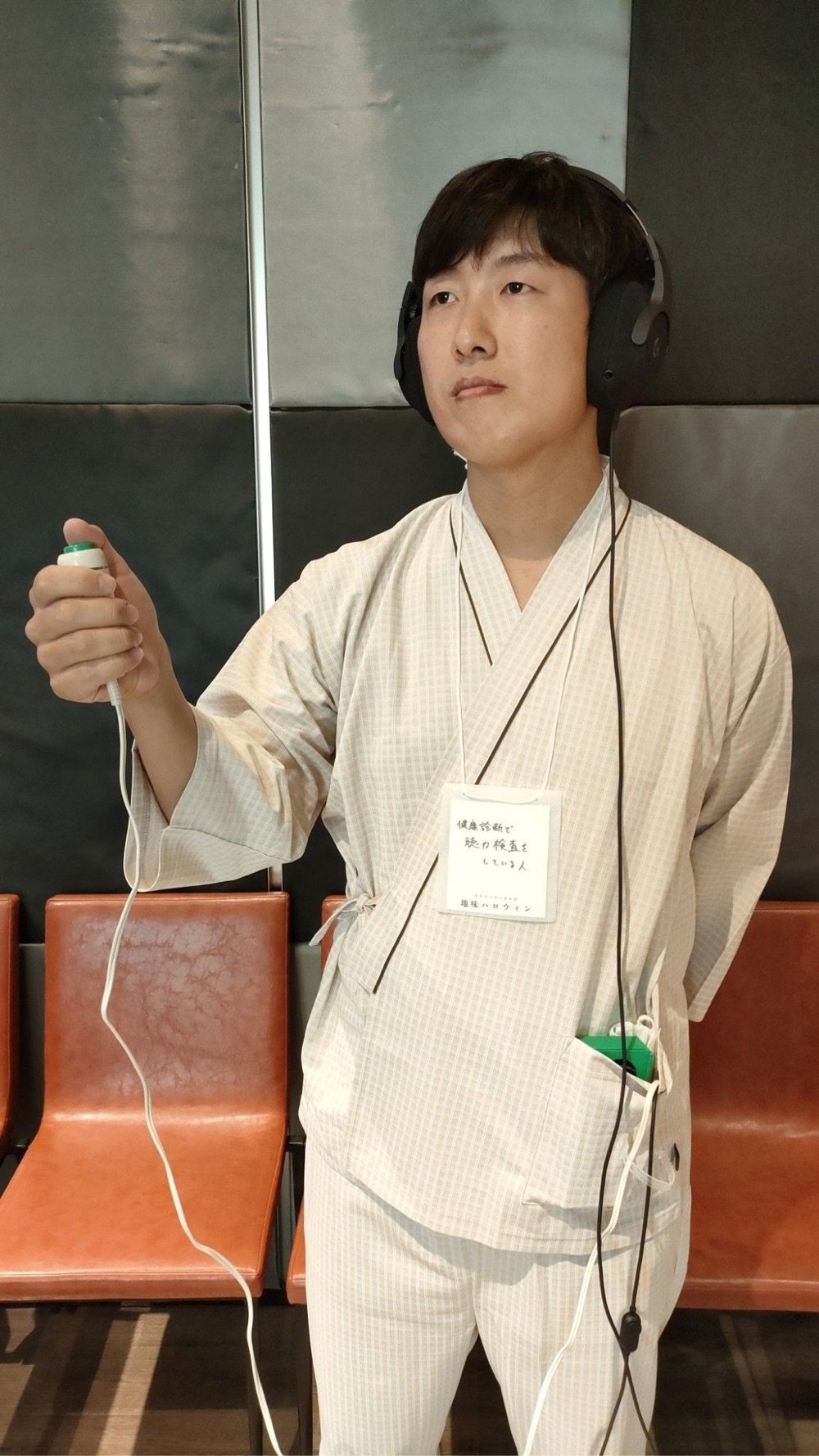
“Person taking a hearing test at the doctor’s office”
See also 2021’s best costumes, including “guy who leans in as his Mario Kart character turns a curve”.
For the Guardian, Michael Harriot writes that “The real Martin Luther King would make white people uncomfortable”:
One does not have to reach back into the historical archives to explain why King was so despised. The sentiments that made him a villain are still prevalent in America today. When he was alive, King was a walking, talking example of everything this country despises about the quest for Black liberation. He railed against police brutality. He reminded the country of its racist past. He scolded the powers that be for income inequality and systemic racism. Not only did he condemn the openly racist opponents of equality, he reminded the legions of whites who were willing to sit idly by while their fellow countrymen were oppressed that they were also oppressors. “He who passively accepts evil is as much involved in it as he who helps to perpetrate it,” King said. “He who accepts evil without protesting against it is really cooperating with it.”
My kids and I went to the local toy store yesterday to do some holiday shopping for Toys for Tots. When we took our purchases to the counter, the woman thanked us for contributing and said that individual donations are much more important this year because big corporate donations to the program were way down. She said that the toy companies don’t have excess inventory to donate (I’m assuming because of supply chain issues and a desire for more corporate efficiency).
I posted about this on Instagram and heard from folks in other parts of the country that both individual and corporate donations to community toy drives are down. A quick check of Google News reveals several articles around the country about toy drive shortages; here’s a good piece from the Associated Press:
Similar worries are being felt across the country as COVID-related supply chain snafus — produced by clogged U.S. ports, a lack of workers to move the cargo and skyrocketing shipping costs — lead to empty store shelves and higher prices on some products.
The supply chain slowdown is one of the main reasons why donations of new toys to The Toy Foundation have declined by nearly 80% in dollar value this year compared to 2019, according to Pamela Mastrota, the executive director of the group, which was formed by a toy industry trade association to act as an industry-wide charitable collective for manufacturers.
The lack of trade shows due to the COVID-19 pandemic also put a wrench in their collection efforts for the second year in a row, straining their ability to get gifts for sick, impoverished or other vulnerable children who are in need.
“It’s been a real challenge this year, and last year,” Mastrota said. “But this year especially.”
With Christmas just 8 days away, I know it’s late in the game but if you can swing it this year, consider a big donation to your local toy drive. Kids from low-income families have borne the brunt of the pandemic in America — parents/caregivers losing their jobs, erratic education, upheaval, loved ones dying of Covid, sickness and death all around. Let’s do what we can do to help give these kids a happy holiday.
But on a more long-term note (and supply chain & pandemic issues aside), programs like this should be unnecessary in a country as rich as the United States. Remember, feel-good news stories in America are often signs of societal failure and nothing is more feel-good than helping low-income kids during the holidays. Supporting programs and leaders who want to build a much stronger and more robust social safety net is essential if we want to eliminate make needless scarcity like this in America.
It’s become a tradition in Japan to dress up in mundane costumes that depict everyday situations for Halloween and once again Johnny Waldman of Spoon & Tamago has collected some of the best and most creative efforts for 2021. Here are a few favorites. “Guy who leans in as his Mario Kart character turns a curve” (I am 100% this guy when I play):

“That person who showed up for the free trial lesson”:

“That cashier who looks away as you enter your debit PIN”:

“Girl who started decluttering but ended up on her phone”:
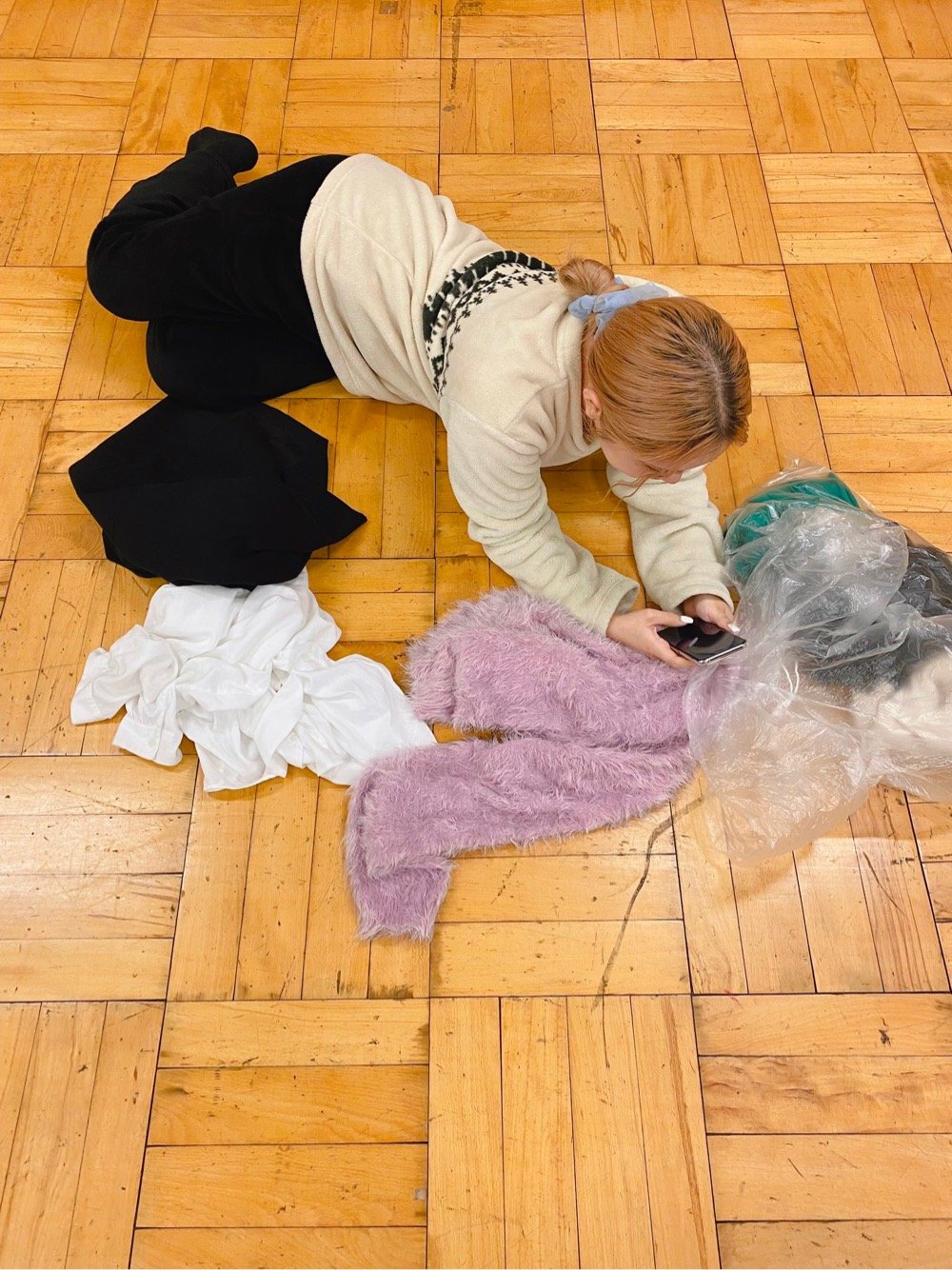
You can see the rest here or check out the costumes from 2019 and 2020.
In the Scottish village of Newburgh, the Christmas lights hung up around town were designed from drawings done by local schoolchildren. Poppy McKenzie Smith shared some of the displays on Twitter.
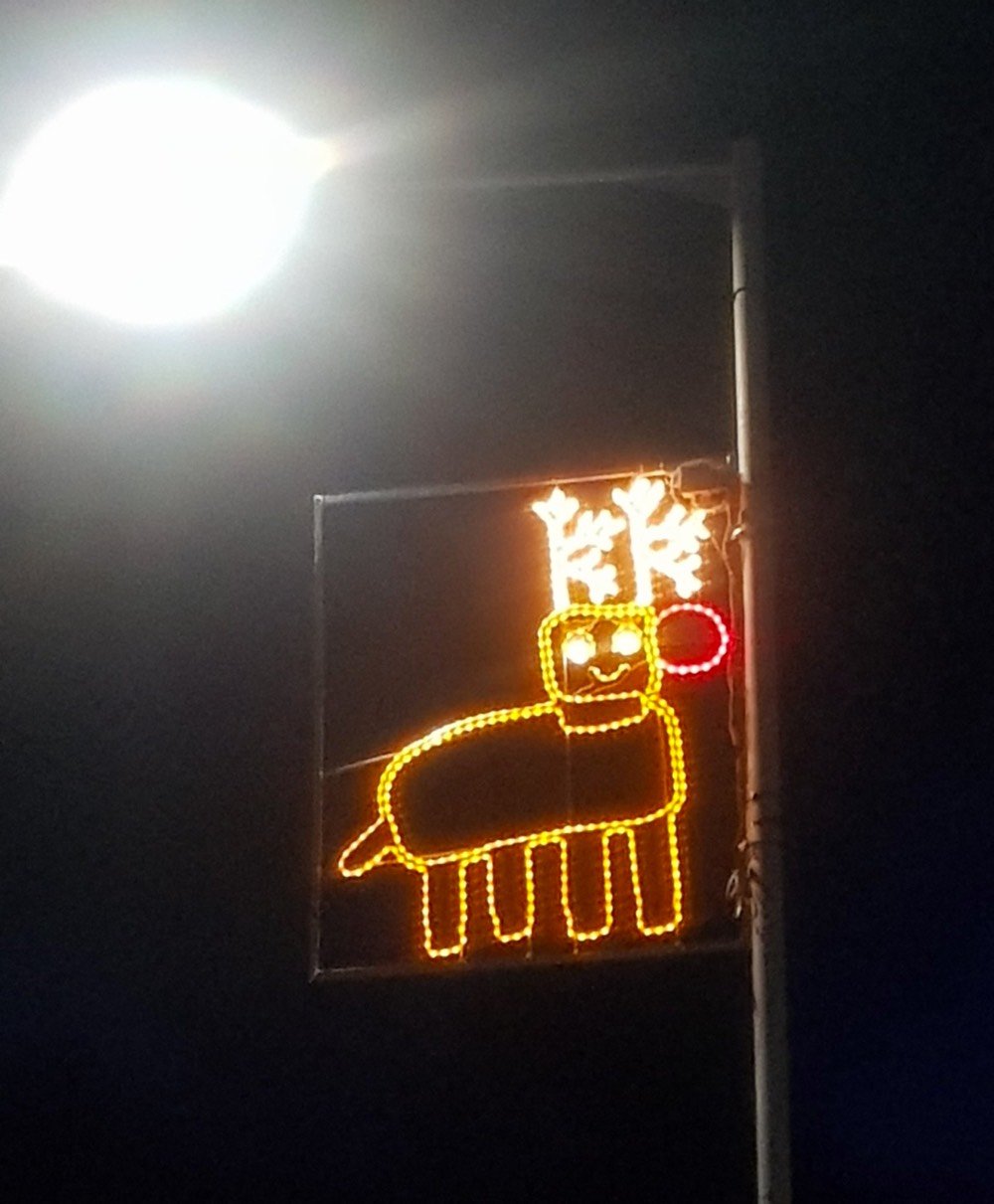

This is the best, way better than any professional display. The kids must feel so great seeing their handiwork lit up around town like this.
As I write this, it’s snowing outside here in Vermont and Covid-19 has finally gained a foothold in our little state. At the governor’s press conference yesterday, he and his pandemic response team announced that contact tracing done by the state showed that the rise in cases started as an outbreak in some hockey leagues. That initial outbreak wasn’t contained and subsequent non-essential, indoor, mask-less, multi-household gatherings and Halloween parties resulted in the very sharp rise we started to see here in the first week of November.
Scott explained that 71% of outbreaks reported from Oct. 1 to Nov. 13 were linked to “social events, parties and people hanging out at home or bars and clubs.” He added Vermont has not seen the virus spread widely at schools, restaurants or other businesses.
Dr. Mark Levine, the state health commissioner, said those parties came in a variety of sizes of parties — Halloween gatherings large and small, dinner parties, baby showers, “people in the high single numbers at a deer camp.”
In states with many infections, particularly in the Midwest, contact tracing is all but impossible, so it’s instructive to pay attention to Vermont’s example here: we’re doing the tracing and the tracers say the infections are coming from people gathering indoors across multiple households. Which is exactly what public health and medical experts have been urging people not to do for months now.
And that brings us to Thanksgiving. For The Atlantic, Rachel Gutman asked her colleagues who have been writing extensively about the pandemic for some of their top safety rules and guidelines and their number one was, say it with me:
My colleagues’ guidance boils down to this winter’s golden rule for interacting with anyone outside your immediate household: Don’t spend time indoors with other people.
Here it is again in a fun font, just to make sure you got it: 𝓓𝓸𝓷’𝓽 𝓼𝓹𝓮𝓷𝓭 𝓽𝓲𝓶𝓮 𝓲𝓷𝓭𝓸𝓸𝓻𝓼 𝔀𝓲𝓽𝓱 𝓸𝓽𝓱𝓮𝓻 𝓹𝓮𝓸𝓹𝓵𝓮.
Look, for some people spending time indoors with others is essential — jobs, education, etc. — but those who don’t have to, shouldn’t. And this goes for everywhere in the US because no states (aside from maybe Hawaii) are doing well right now — cases are either high, rising sharply, or both. Please please don’t gather in indoor, multi-household groups for Thanksgiving if you haven’t quarantined beforehand. In the US right now, about 1-in-55 people who get Covid-19 die from it. With rates already high around the country, if many people do Thanksgiving as usual, an already horrific and deadly situation could become much much worse.
In a powerful video for the Movement For Black Lives, Daveed Diggs asks: “What, to My People, is the Fourth of July?”
What, to my people, is the Fourth of July? My people, who are failed every day by every country, sleepless in the long night, terrorized by fireworks, we who have cried salt baths for our kin.
Look at all we have borne for you: arms, armistice, the sweetest fruits, flesh of children hidden away from the ugly summer of their own blood — we are on the front lines. Help me, tell me, what do we tell the children of your Fourth of July? What is death to a daughter? What is river to a sea? Where is the country where my people are safe?
Ancestors set the table send dream mares in high supply. Too heavy, too spent, too hot to cook, no promise beyond the sparkly simple bombs. Keep your holiday, your hunger, the blood in your teeth. Police parade down streets, proud descendants of the slave patrol. Theater of denial, a propaganda pageant, and we are on the front lines all summer. My uncle can’t sleep and he was born free. And he ain’t never been.
The text performed by Diggs — written by Safia Elhillo, Danez Smith, Lauren Whitehead, W. Kamau Bell, Angel Nafis, Idris Goodwin, Pharoahe Monch, Camonghne Felix, and Nate Marshall — was inspired by Frederick Douglass’ July 5, 1852 speech, in which he asked, “What, to the American slave, is your Fourth of July?”
Fellow-citizens, pardon me, allow me to ask, why am I called upon to speak here to-day? What have I, or those I represent, to do with your national independence? Are the great principles of political freedom and of natural justice, embodied in that Declaration of Independence, extended to us? and am I, therefore, called upon to bring our humble offering to the national altar, and to confess the benefits and express devout gratitude for the blessings resulting from your independence to us?
Today is Juneteenth, a holiday that started in Texas that celebrates the emancipation of enslaved people in the United States. From Vox’s Juneteenth, explained:
A portmanteau of “June” and “nineteenth,” Juneteenth marks the day in 1865 when a group of enslaved people in Galveston, Texas, finally learned that they were free from the institution of slavery. But, woefully, this was almost two and a half years after President Abraham Lincoln signed the Emancipation Proclamation; the Civil War was still going on, and when it ended, Union Maj. Gen. Gordon Granger traveled to Texas and issued an order stating that all enslaved people were free, establishing a new relationship between “former masters and slaves” as “employer and hired labor.” As much as Juneteenth represents freedom, it also represents how emancipation was tragically delayed for enslaved people in the deepest reaches of the Confederacy.
And freedom was further delayed, but the holiday stuck. From What Is Juneteenth? by Henry Louis Gates, Jr.:
When Texas fell and Granger dispatched his now famous order No. 3, it wasn’t exactly instant magic for most of the Lone Star State’s 250,000 slaves. On plantations, masters had to decide when and how to announce the news — or wait for a government agent to arrive — and it was not uncommon for them to delay until after the harvest. Even in Galveston city, the ex-Confederate mayor flouted the Army by forcing the freed people back to work, as historian Elizabeth Hayes Turner details in her comprehensive essay, “Juneteenth: Emancipation and Memory,” in Lone Star Pasts: Memory and History in Texas.
Those who acted on the news did so at their peril. As quoted in Litwack’s book, former slave Susan Merritt recalled, ” ‘You could see lots of n***ers hangin’ to trees in Sabine bottom right after freedom, ‘cause they cotch ‘em swimmin’ ‘cross Sabine River and shoot ‘em.’ ” In one extreme case, according to Hayes Turner, a former slave named Katie Darling continued working for her mistress another six years (She ” ‘whip me after the war jist like she did ‘fore,’ ” Darling said).
Hardly the recipe for a celebration — which is what makes the story of Juneteenth all the more remarkable. Defying confusion and delay, terror and violence, the newly “freed” black men and women of Texas, with the aid of the Freedmen’s Bureau (itself delayed from arriving until September 1865), now had a date to rally around. In one of the most inspiring grassroots efforts of the post-Civil War period, they transformed June 19 from a day of unheeded military orders into their own annual rite, “Juneteenth,” beginning one year later in 1866.
From the NY Times’ collection of articles to mark the Juneteenth holiday, Veronica Chambers writes:
“Recently, I heard Angela Davis talk about the radical imagination,” Ms. [Saidiya] Hartman said. “And a fundamental requirement is believing that the world you want to come into existence can happen. I think that that is how black folks have engaged with and invested in and articulated freedom, as an ideal and as an everyday practice.”
I couldn’t agree more. As someone who has celebrated Juneteenth for a long time, I think we need it now — not in lieu of the freedom, justice and equality we are still fighting for — but in addition, because we have been fighting for so very long.
The elemental sermon embedded into the history and lore of Juneteenth has always been one of hope. The gifts of the holiday are the moments of connection, renewal and joy for a people who have had to endure so much, for so long.
Gina Cherelus shares how folks around the country celebrate, past and present — This Is How We Juneteenth:
Kenneth Timmons, who works for a federal government agency in Houston, said the first thing he usually does before every Juneteenth is take the day off work. Mr. Timmons usually invites friends over to cook and eat together.
“My co-workers know why I’m off, I tell them I don’t work Juneteenth,” Mr. Timmons, 47, said. “I don’t work on my Independence Day.”
Born and raised in Lufkin, Texas, a town more than 100 miles northeast of Houston, Mr. Timmons remembers attending community Juneteenth celebrations as a child, where he would watch rodeo shows, pageants, eat barbecue and participate in calf chasing contests.
“Even though the United States celebrates July 4 as their independence, we were still considered slaves,” said Mr. Timmons. “So for us, that is the day that our ancestors were finally released from servitude and slavery and could escape the South.”
Calls for Juneteenth to be a federal holiday have grown over the past few years. Here’s the case from the staff of The Root and Danielle Young — Juneteenth Is Finally Entering the Mainstream American Consciousness. Now Make It An Official Federal Holiday.
Forget the 4th of July! Juneteenth is the day that should be celebrated by all as a pivotal point in America’s freedom story.
93-year-old Texas resident Opal Lee is working to get Juneteenth recognized as a national holiday. You can follow her efforts here and sign her petition.
And finally, here are some ways to get involved in the movement for Juneteenth, including educational resources, events & protests, suggestions for how to invest in the Black community, places to donate, volunteer opportunities, etc.
Boston College historian Heather Cox Richardson has been writing a near-daily political dispatch called Letters from an American for the past several weeks (her archives go further back on Facebook), mostly about the impeachment proceedings and their historical context.
In today’s letter, Richardson reminds us why Americans celebrate Thanksgiving.
Everyone generally knows that the Pilgrims and the Wampanoags shared a feast in fall 1621, and that early colonial leaders periodically declared days of thanksgiving when settlers were supposed to give their thanks for continued life and — with luck — prosperity.
But this is not why we celebrate Thanksgiving.
We celebrate thanks to President Abraham Lincoln and his defense of American democracy during the Civil War.
Northerners elected Lincoln to the presidency in 1860 to stop rich southern slaveholders from taking over the government and using it to cement their own wealth and power. When voters elected Lincoln, those same southern leaders pulled their states out of the Union and set out to create their own nation, the Confederate States of America, based in slavery and codifying the idea that some men were better than others and that this small elite group should rule the country. Under Lincoln, the United States government set out to end this slaveholders’ rebellion and bring the South back into a Union in which the government worked for people at the bottom, not just those at the top.
File this under “I Love NYC”. On Sunday night, riders on a Brooklyn-bound L train were treated to a full Thanksgiving dinner, courtesy of some of their fellow straphangers. For more than 20 minutes, a group of riders dined and passed out plates of turkey, collards, stuffing, squash, and mashed potatoes to other folks in the car. Here’s a 21-minute chunk of the action:
They started the meal with a prayer and everything. An onlooker said of the event:
It was a 7 PM Sunday L from union square and was not crowded at all. They said it was an inclusive gesture to emphasize no one should go without food on Thanksgiving. They were loud but not rowdy or a nuisance. They even handed out plates to everyone in the car — I got one and the turkey was a solid 7/10 and collard 8.5/10. I’m glad I got to experience something like this. Makes a great story!
There were even MTA employees amongst us but no one objected.
Here’s a shorter video with some of the highlights:
(thx, johana)
Each year since 2014, a group in Japan holds a Halloween event where people come dressed not as witches, Avengers, or zombies but in everyday “mundane” costumes. This year’s costumes include “woman who forgot to take out the trash” and “woman who showed up to a BBQ with no intention of helping out”. My personal favorite is “guy who face-swapped with a Starbucks cup”:
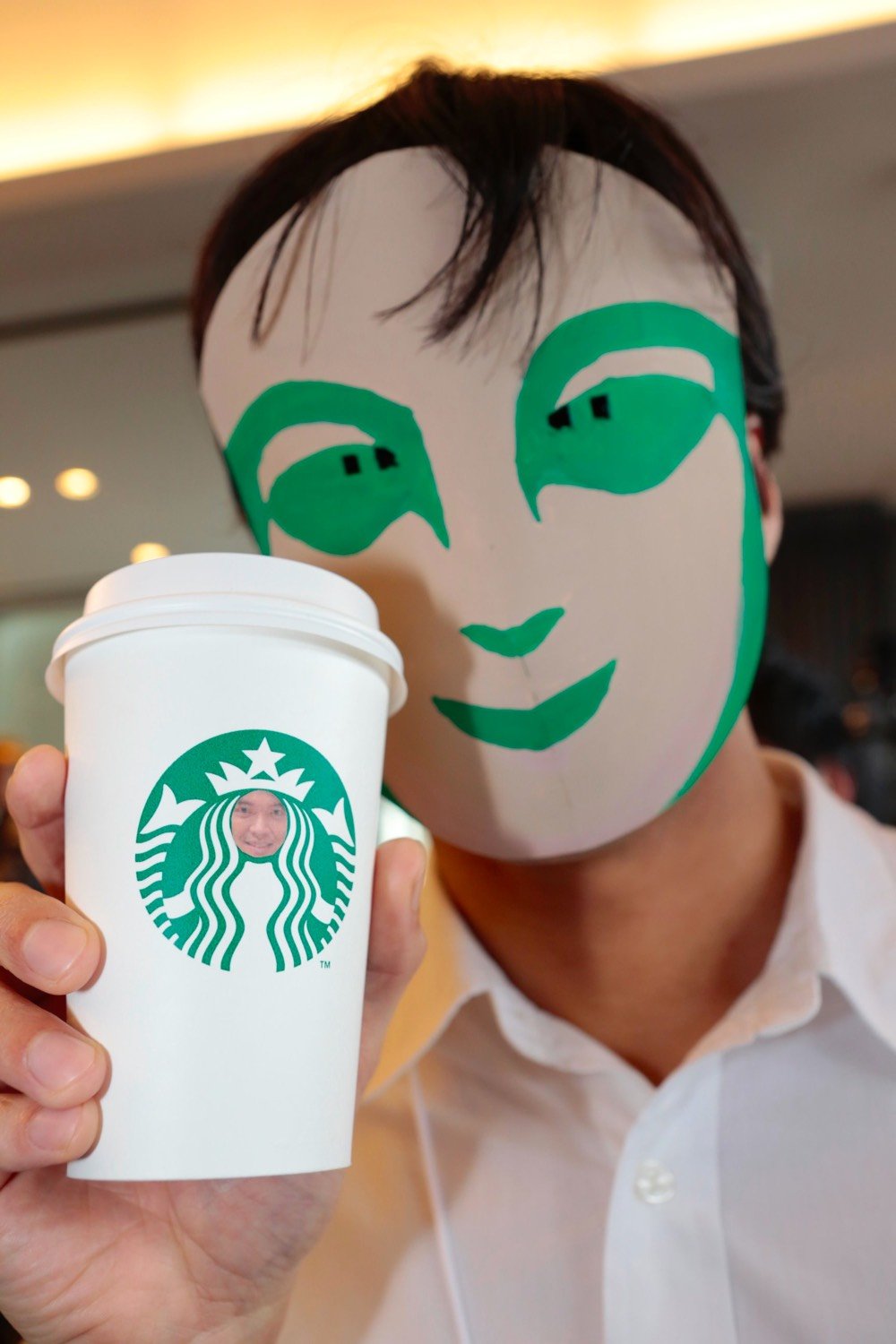
You can see more costumes from this year on Twitter #DPZ or Spoon & Tamago. See also some of last year’s costumes, including “a girl who just gave blood and now can’t do anything for a few minutes” and “guy at the office whose turn it is to empty the shredder”.

I’m not much for Halloween, but this I could get into.
In most parts of the United States, the holiday listed on the calendar today is Columbus Day, which was designed to celebrate Italian-American heritage in America. However, there is a growing movement to replace the holiday commemorating the genocidal Cristòffa Cómbo with one that honors the original human inhabitants of the Americas, Indigenous Peoples’ Day.
In the forefront of the minds of many Native people throughout the Western Hemisphere, however, is the fact the colonial takeovers of the Americas, starting with Columbus, led to the deaths of millions of Native people and the forced assimilation of survivors. Generations of Native people have protested Columbus Day. In 1977, for example, participants at the United Nations International Conference on Discrimination against Indigenous Populations in the Americas proposed that Indigenous Peoples’ Day replace Columbus Day.
Indigenous Peoples’ Day recognizes that Native people are the first inhabitants of the Americas, including the lands that later became the United States of America. And it urges Americans to rethink history.
Join me in supporting the Native American Rights Fund today.
Writing for The New Yorker, Tom Batten has come up with some Valentine’s Day themed math word problems.
3. A local pizzeria is offering one large pizza for eleven dollars and seventy-five cents on Valentine’s Day. If you have forty-six dollars in your checking account, it takes you twenty-five minutes to eat a large pizza all by yourself, and your only plan for the evening is to spend ninety minutes scrolling through the Instagram account of a woman you had a crush on in high school for clues that her marriage might be faltering, how did it come to this?
See also how to decipher what’s inside each chocolate in a box of chocolates.
Wes Anderson directed a short holiday film starring Adrien Brody for H&M. It is delightful. You can criticize the twee formality in his work,1 but this is a reminder that Anderson can bring the emotion when he wants.
I mean, I love that about his stuff, but I know many don’t. Criticize away!↩

Amazing! Redditor eudicotyledon and family win the holiday season with this exquisite gingerbread rendition of the Overlook Hotel from “The Shining,” complete with scary gingerbread twins and edible wallpaper, Danny lost in a hedge maze made of green Rice Krispies, a quinoa-and-powdered-sugar snow covered roof, Jack and Wendy fighting, the dreaded room 237 and its decomposing woman in the bathtub, and an elevator spilling a hallway of Jolly Rancher blood. Unbelievable. (via Neatorama)

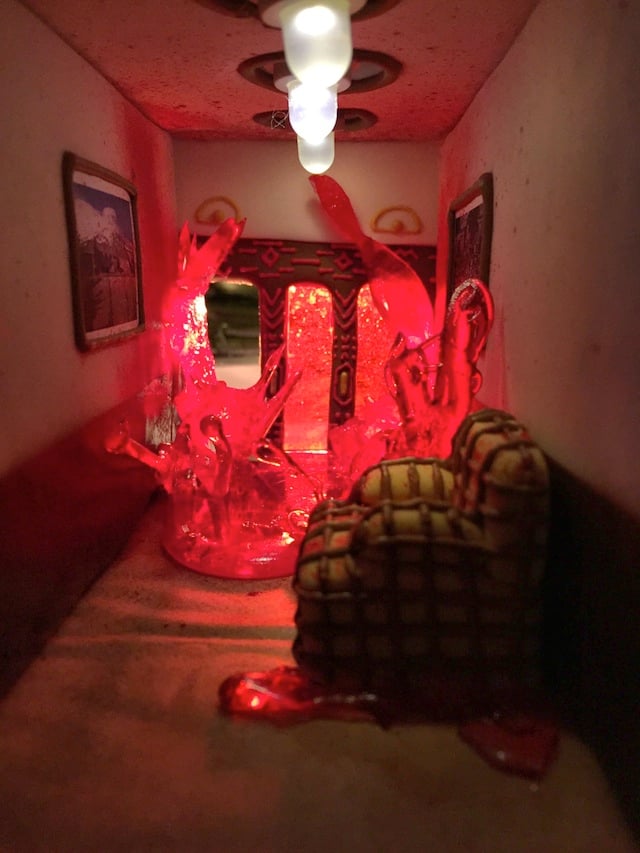
Boston Dynamics wins the holidays with this trio of robot reindeer drawn sleigh.
Things don’t work out so well for Santa and his reindeer in “Happy Holidays,” a video by Eoin Duffy. (via This Isn’t Happiness)
Copyranter says this is the best St. Patrick’s Day ad ever made.
See also: Mouth Eyes, Madonna’s “Bedtime Story,” and “Born with Three Mouths.”
On the intersection of Presidents’ Day and Black History Month, Erica Armstrong Dunbar highlights an uncomfortable truth about George Washington: he was a proud and fervent slave owner.
During the president’s two terms in office, the Washingtons relocated first to New York and then to Philadelphia. Although slavery had steadily declined in the North, the Washingtons decided that they could not live without it. Once settled in Philadelphia, Washington encountered his first roadblock to slave ownership in the region — Pennsylvania’s Gradual Abolition Act of 1780.
The act began dismantling slavery, eventually releasing people from bondage after their 28th birthdays. Under the law, any slave who entered Pennsylvania with an owner and lived in the state for longer than six months would be set free automatically. This presented a problem for the new president.
Washington developed a canny strategy that would protect his property and allow him to avoid public scrutiny. Every six months, the president’s slaves would travel back to Mount Vernon or would journey with Mrs. Washington outside the boundaries of the state. In essence, the Washingtons reset the clock. The president was secretive when writing to his personal secretary Tobias Lear in 1791: “I request that these Sentiments and this advise may be known to none but yourself & Mrs. Washington.”
(via mr)
From the NY Times, an epic listing of recipes for traditional (and not so traditional) Thanksgiving food from each of the 50 US states. Featuring lefse from North Dakota, salty pluff mud pie from South Carolina, turkey tamales from Texas, and cheddar mashed potatoes from Vermont. (via @jimray)
This year, the first day of Hanukkah coincides with Thanksgiving Day. Amazingly, this is the first second time it’s happened since President Lincoln established Thanksgiving in 1863 and it is also the last time it’ll happen until the year 79,811. I’ll say that again: after this year, Hanukkah and Thanksgiving Day won’t overlap for another 77,798 years.
The reason is because the Jewish calendar is very slowly getting out of sync with the solar calendar, at a rate of 4 days per 1000 years (not bad for a many centuries old calendar!) This means that while presently Hanukkah can be as early as 11/28, over the years the calendar will drift forward, such that the earliest Hanukkah can be is 11/29. The last time Hanukkah falls on 11/28 is 2146 (which happens to be a Monday).
(via @hchamp)
Update: As noted above, Thanksgiving and Hanukkah overlapped once before, in 1888, because Thanksgiving used to fall on the last Thursday in November and not the fourth Thursday.
A group of citizens is attempting to change Columbus Day to Exploration Day. Columbus Day has always been a weird holiday, what with CC’s slavery and genocide and all, so this seems like a good idea to me. Maggie Koerth-Baker makes the case over at Boing Boing.
The logic is quite neat. Columbus Day is about one guy and the (actually untrue) claim that he was the first person to discover America. Inherently, that’s pretty Euro-centric, which is a big part of why it sits awkwardly in a pluralistic country. But exploration is inclusive. The ancestors of Native Hawaiians were explorers who crossed the ocean. The ancestors of Native Americans explored their way across the Bering land bridge and then explored two whole continents. If you look at the history of America, you can see a history of exploration done by many different people, from many different backgrounds. Sometimes we’re talking about literal, physical exploration. Other times, the exploring is done in a lab. Or in space. But the point is clear: This country was built on explorers. And it needs explorers for the future.
If you want to help out, sign this petition to Congress or this one to the White House.
For tomorrow, a turkey stuffing recipe that uses White Castle hamburgers. I’d really like to try this some year, but there’s no way my wife would go for it. Come on, it’s from scratch! (Well, except for the burgers…)
Stay Connected